Jim Houston was a winner at every level in his football career. He won the Ohio High School Athletic Association championship for Massillon Washington High School in 1953, the National Championship for The Ohio State University in 1957, and the NFL Championship for the Cleveland Browns in 1964. Houston had a gregarious personality and championed dozens of charities. He married his wife Donna in 1998. A few years after their marriage, Donna noticed Jim’s memory and decision-making start to decline. His condition only worsened and his cognition and movement suffered to the point where he was solely dependent on Donna. He died in a memory care facility in September 2018 and was later diagnosed with Stage 3 (of 4) Chronic Traumatic Encephalopathy (CTE) by researchers at the UNITE Brain Bank. Donna is sharing Jim’s story to further his legacy of helping youth by advocating for Flag Football Under 14 and to share her experience as a CTE caregiver.
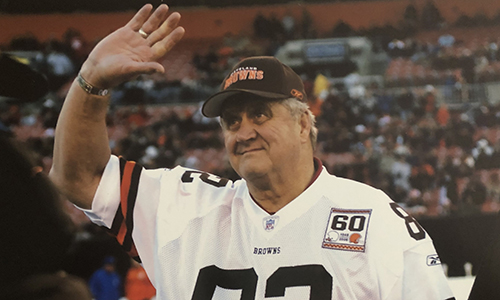
Mr. Dependable
At lunchtime in Massillon, Ohio, a young Jim Houston would run home from school to snag food. Then he’d run back. In an age before sparkling weight rooms for football teams, Houston had to squeeze in exercise any way he could. The team needed him, of course.
Houston started playing football in the eighth grade. He tried out for the team the prior year, the first age kids could start playing in Massillon, but he was deemed too small. Two years later, Houston earned All-City honors as a tackle and defensive end for Massillon Washington High School. He led Massillon Washington to a state championship in 1953.
His exploits in high school garnered the attention of Woody Hayes, then coach for The Ohio State University. Houston’s older brother Lin had starred for the Buckeyes in the 1940’s. Hayes recruited Houston to play defensive end and convinced Houston to relocate 118 miles south along Interstate 71 to Columbus and play for the Buckeyes. There, Houston’s habitual winning continued.
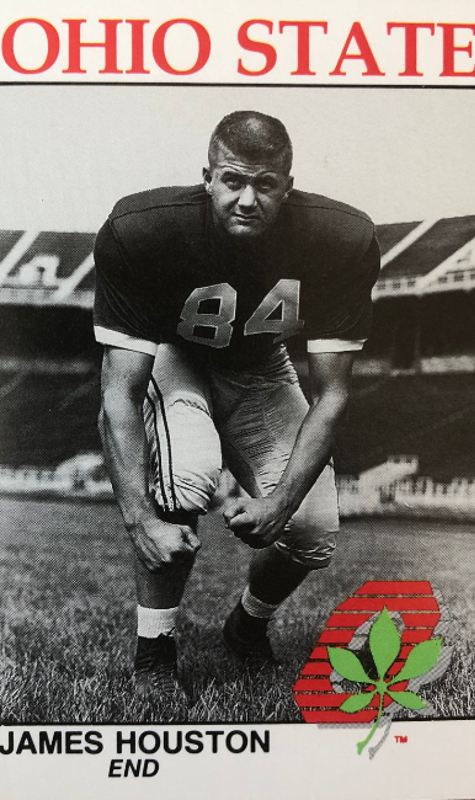
Freshmen weren’t allowed to play varsity football when Houston arrived on campus. Still, coaches saw his potential and heavily involved him in film sessions and practices in preparation for a big role his sophomore season. In that 1957 season, Houston started on offense and defense including catching an interception and playing all 60 minutes in the Rose Bowl to help the Buckeyes win a National Championship.
Houston continued to play both ways his junior and senior seasons, before being selected in the first rounds of both the 1960 AFL and NFL Drafts. He again followed Lin by opting to play for the Cleveland Browns.
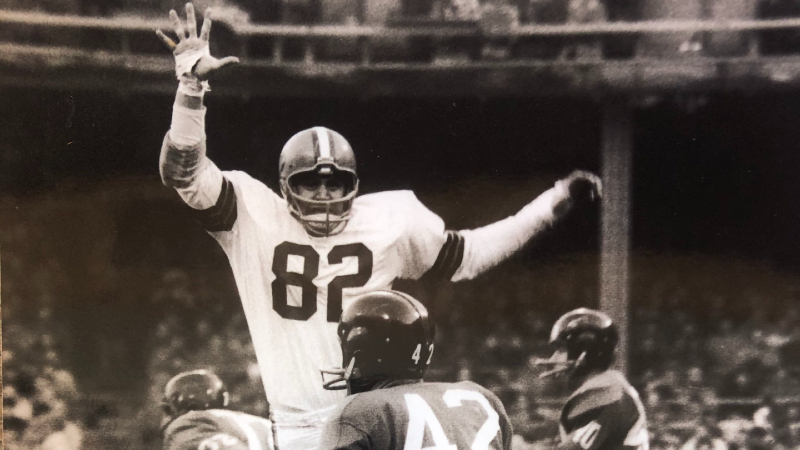
Houston played defensive end for his first three seasons with the Browns, but setting the edge wasn’t his only obligation. In 1962 and 1963, Houston served as an infantry unit commander for the U.S. Army spending his weekdays at Fort Dix, New Jersey. On the weekends, Houston flew to wherever the Browns were playing. His commitment to his country and his NFL team earned him the nickname “Mr. Dependable.”
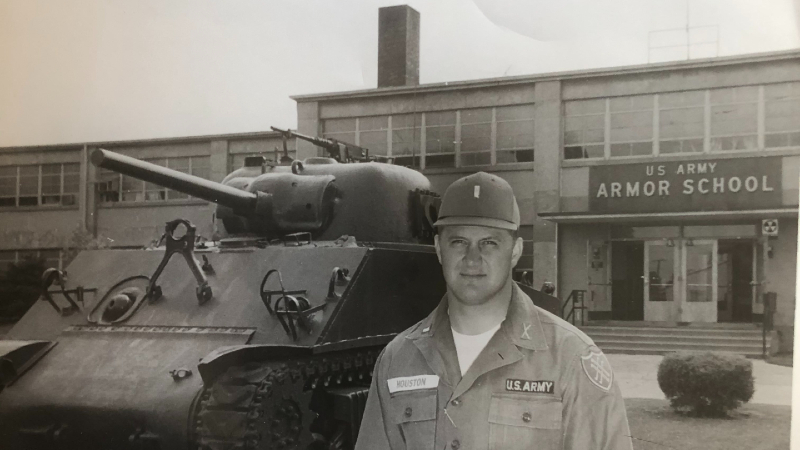
The 1963 season brought change and success. The Browns hired Blanton Collier as head coach, who moved Houston from end to linebacker. The following season, Houston made the Pro Bowl and the Browns found themselves in the NFL Championship against the Baltimore Colts.
The Colts were favored heading into the game, but the Houston-led defense shut out the high-powered Colts offense in a 27-0 win. Houston covered Baltimore tight end John Mackey in single coverage and held the future Hall of Famer to one catch for two yards.

Houston made three more Pro Bowls in his career while moving to whichever linebacker spot the Browns needed him. He retired from the NFL in 1972 and was inducted into The Ohio State University Varsity “O” Hall of Fame in 1979, the College Football Hall of Fame in 2005, and the Browns Legends in 2006.
His career was not without pain, as Houston suffered several concussions. His most public came in a 1969 playoff game against the Minnesota Vikings, led by quarterback Joe Kapp. While trying to chase Kapp, Houston’s helmet hit Kapp’s knee pad and knocked him out. The Browns lost the game 27-7, and Houston was delirious for weeks afterwards. He had trouble driving and couldn’t go to work.
Houston’s concussion history predated his NFL days. During one of his many speeches for charity causes, he recounted being knocked out on the opening kickoff of the Ohio North-South all-star game, and then re-entering the game in the second half. “There was no holding me back after I regained consciousness,” Houston said. “By that time, it was in the second half.”
Life after football
Jim Houston’s post-football life was colored by charitable ventures, most often to give back to the youth of Ohio.
Houston’s dedication to the next generation started early. He frequented the Boys and Girls Club of Massillon as a kid and led fundraising efforts to give back to the clubs of Ohio. In 1964, a 15-year-old Akron boy who had just lost his father wrote to Houston for advice. Houston wrote back as he did with all fan mail. He penned, “When you come to the point where you can’t take one more step, take two.”
After he and his first wife divorced, Houston moved to Bainbridge, Ohio in the early 1990’s. He started attending the United Methodist Church in Chagrin Falls.
“He never said anything about being a former player or anything,” said Donna Houston. “Finally, someone in the congregation told me that he was the most eligible bachelor at the church and I should pay attention to him.”
Donna was a nurse in the area and noticed how Houston cared for his granddaughter. She would hear him say, “How ya doing, kid?” to the many churchgoers whose names he didn’t remember but whose presence he so appreciated.
They attended the same classes between first and second services and began to find common interests and beliefs. Donna and Jim started dating in 1997 and were married in 1998.
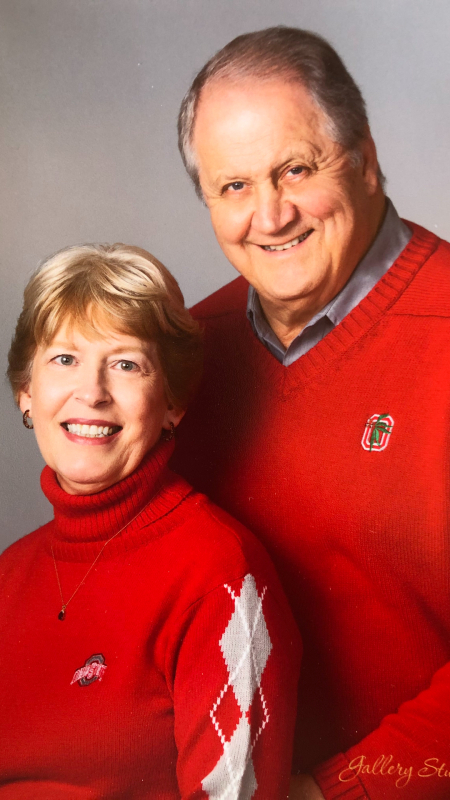
The Houston’s loved to travel, and they did it often. Aside from frequent trips to Columbus and Cleveland, they rented various timeshares. Their travels took them to southern mainstays like Myrtle Beach, Hilton Head, and Savannah. Donna and Jim fell in love with Savannah’s courtyards complete with fountains and vines. They installed their own Savannah-style courtyard in 2002, which became the site of many nights entertaining friends and peaceful mornings together.
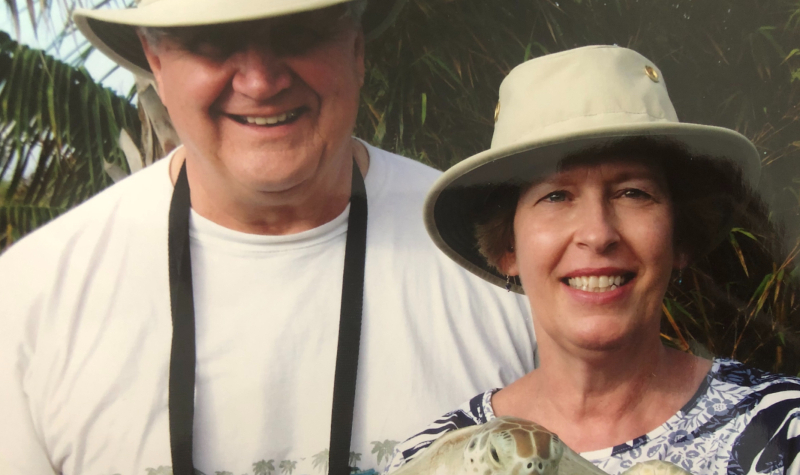
Houston’s grandchildren adored him, and he adored them right back. Donna and Jim loved to babysit, and hosted the children for summers, and attended their sports games.
But around this time, Houston’s decision making began to alarm Donna. He made choices without any regard for consequences, especially financially. He gave telemarketers exactly what they wanted and spent money the Houstons didn’t have.
“It’s like you don’t have any common sense,” Donna would say to him.
“Just forget it”
Donna came to learn that Houston’s financial issues were set in motion years earlier. He declared bankruptcy before they got married.
His troubles began to extend beyond financial issues. By around 2006, his behavior was so bizarre Donna began to take notes. He once removed a lightbulb from a lamp and put it in a different lamp, then vehemently denied ever doing it.
“Just forget it,” Houston said to Donna in what became a phrase she heard far too often.
Donna always went to bed before Houston and would kiss him goodnight. Minutes later, Houston would ask Donna where his kiss was and assumed Donna was lying when she corrected him.
Houston could become angry and frustrated after these bouts of confusion, especially behind the wheel. He couldn’t believe there was a law that he had to slow down in a school zone. When driving became dangerous, Donna had to quit work to take care of Houston.

Donna received validation when one of Houston’s sons came to visit in 2006. After seeing his father struggle, he voiced his concerns to Donna.
“It was absolutely overwhelming,” said Donna. “I loved him so much. When he starts fading away from you, it felt like your heart was being ripped out. How could this be?”
Losing Jim
Donna and Jim knew there was a problem, and Donna began to connect the dots between Jim’s football career and his cognitive and physical decline. She clipped newspaper stories about the then-burgeoning link between NFL players and Chronic Traumatic Encephalopathy (CTE).
Houston was primarily concerned his decline could be passed on to his children. In 2008, Houston jumped at the opportunity to have his brain studied for research. He began participating in the Boston University LEGEND study and participated in yearly questionnaires about his cognitive state.
Donna got plenty of advice to get help with Jim’s care. But her love for Jim, her nursing experience, and her desire to learn kept her going. She took a six-hour class from the Alzheimer’s Association about how to best take care of Jim. She made sure Jim got outside and stayed social. The two took daily trips to libraries and various metro parks in Cleveland.
Mobility also became an issue for Houston and therefore Donna. He was diagnosed with ALS in 2014 and visited the Cleveland Clinic’s ALS center. For Jim to go upstairs, she had to hold on to a gait belt to stabilize him to navigate the stairs.
One day, Jim and Donna tumbled down the stairs. Donna realized she was no longer able to care for Jim herself. She moved him in to a dementia living facility in June 2017.
Donna visited the facility every day to bathe and change Jim and spend time with him outside. Jim’s trademark spirit was still on display.
She still heard “How ya doing, kid?”
She noticed Jim, who had an enormous sweet tooth, give his cookie to a man who was worse off than he was.
She noticed his charm was still winning over other ladies at the facility, who overwhelmed him with attempts at kisses.
But she also noticed Jim’s affliction was different than his peers at the facility who were suffering from Alzheimer’s. While others couldn’t remember their own kin, Jim still knew who Donna and his kids were when they visited.
Named after Houston’s old Super Bowl foe John Mackey’s uniform number, the 88 Plan provided some respite for Donna and Jim. Mackey died in 2011 after a long battle with what was eventually diagnosed as CTE. His public struggle with the disease led to the 88 Plan to provide $88,000 a year for former players living with dementia. The 88 Plan paid for Jim’s care and for Donna to find community.
Twice a week, Donna went to support groups for dementia caregivers. She thanks those groups for helping her get through the idea that her husband was fading away.
On Tuesday, September 11, 2018, Jim Houston passed away at age 80.
Jim’s Legacy
After his death, Jim’s brain was sent to the UNITE Brain Bank in Boston. His spinal cord was supposed to also be studied for ALS research but complications from the coroner prevented it.
Dr. Russ Huber of the Brain Bank informed Donna of the test results. Houston was diagnosed with Stage 3 (of 4) CTE. All signs pointed to ALS as well, but researchers could not confirm the diagnosis without spinal cord tissue.
Donna wasn’t surprised but took comfort knowing Jim’s problems weren’t genetic. Going public with his findings is important to Donna to continue Jim’s legacy of giving back to kids.
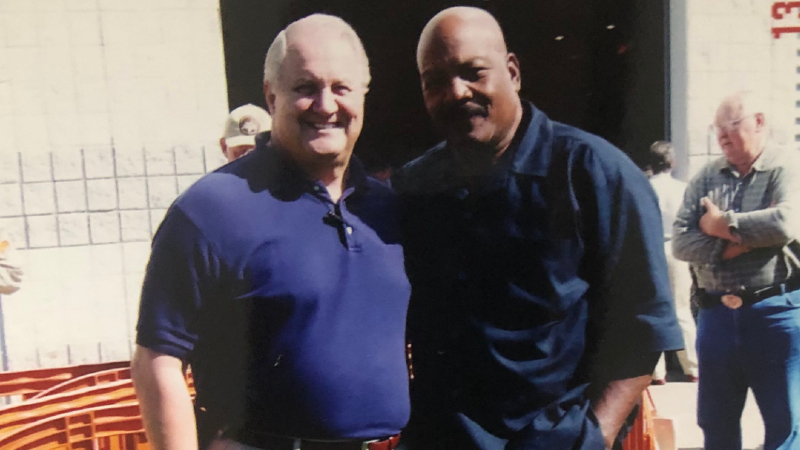
“He loved kids. He was always encouraging them and talking to them about exercise and doing their homework,” Donna said. “He just wanted people to know there’s a problem.”
Donna says Jim’s message wouldn’t have been to avoid football entirely. He would have supported initiatives for safer play, such as our Flag Football Under 14 campaign, which asks parents to reduce their child’s risk for CTE by not enrolling them in tackle football until they’re at least 14.
For other caregivers, Donna says self-care is vital. Taking time for herself, even just to get laundry done, helped her feel normal during Jim’s decline.
“Get the help, go to support groups, and make sure someone goes with you,” Donna said. “You need to talk to somebody who knows what’s happening and know that you’re not the only one who is going through it.”

